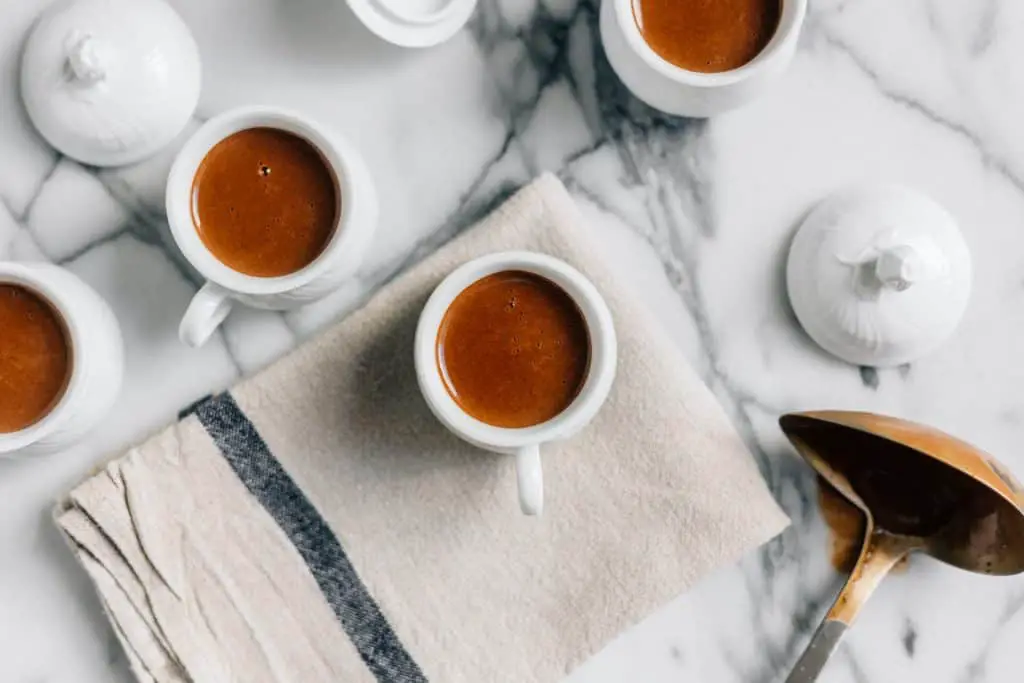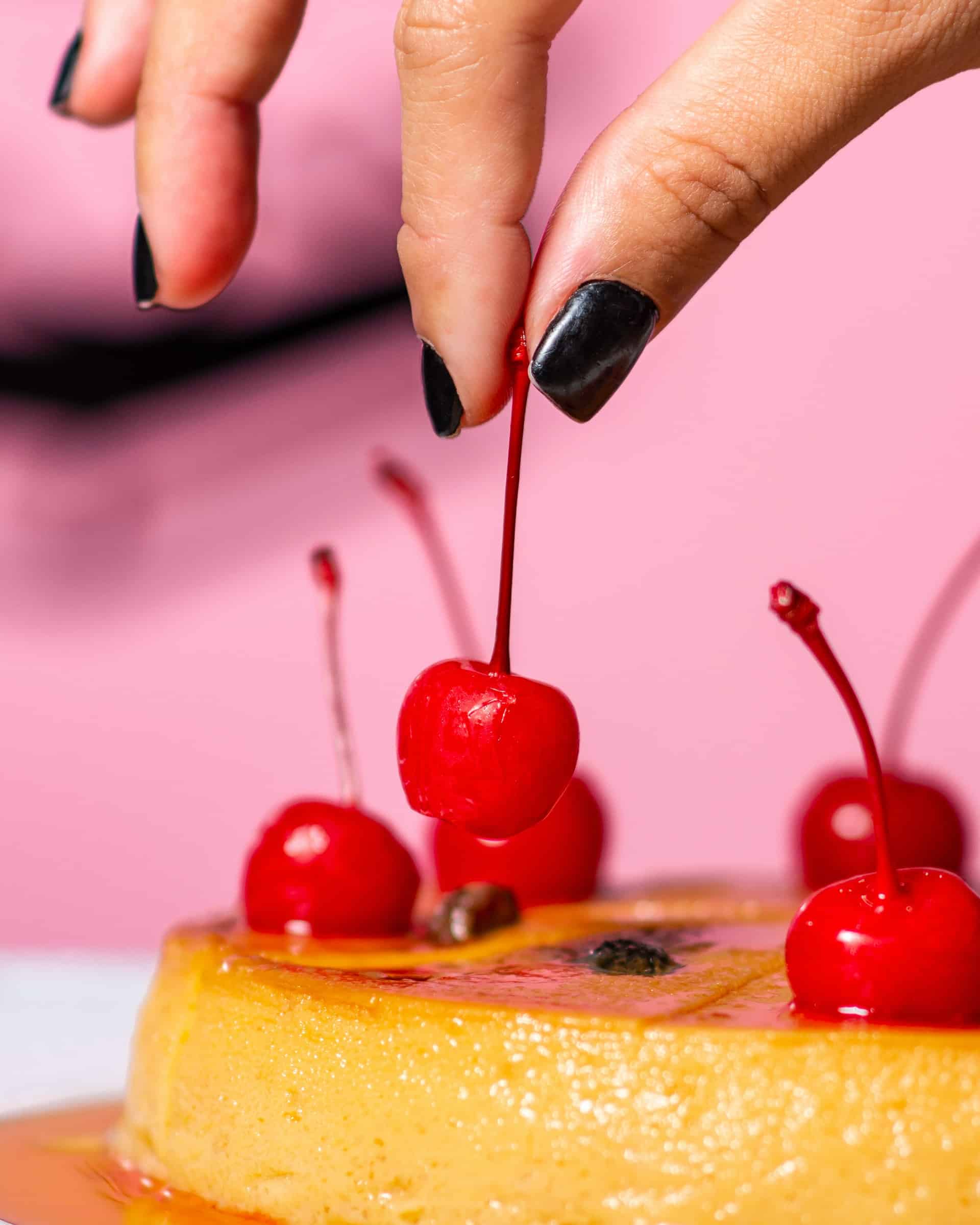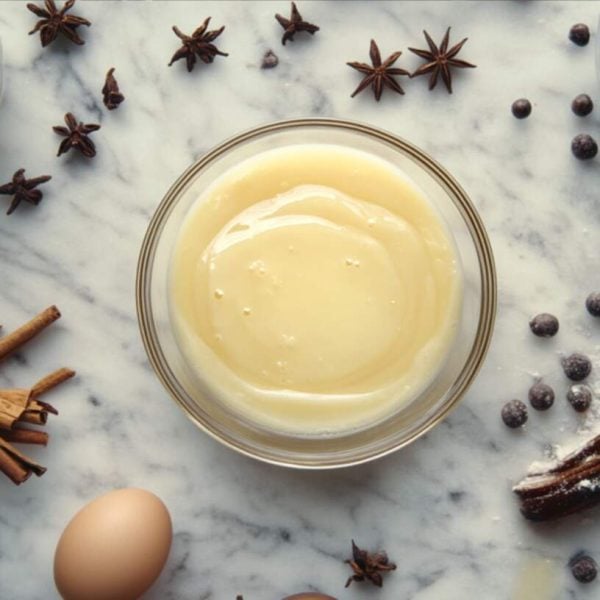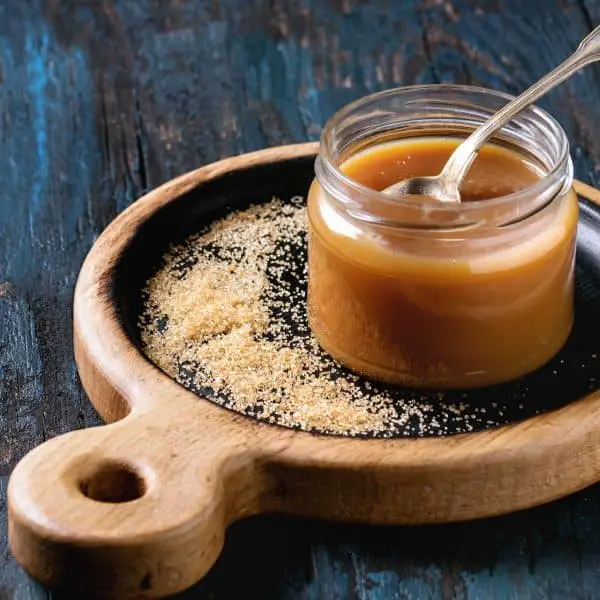I’ve been working with many confections for years and years. But, that doesn’t mean I don’t mess up sometimes in the kitchen. In fact, even when I think I know a recipe by heart, I still end up with bad results every now and then.
This includes chocolates.
How do I mess up my chocolates, you ask? Well, I play around with ingredients sometimes so I can discover new things, and sometimes the results are not as I expect them to be.
Take for example the time when I tried a new brand that promised a richer flavor. It sure tastes fantastic, but it’s also thicker than I would want when melted.
So what’s the best thing to do? Make it thinner, of course!
It’s not a secret that (almost) everything goes well with chocolates – provided you use a good brand and you follow the correct process.
Dipping chocolates are always a hit at home. It’s easy to make, but easy to mess up at the same time.
If you came here looking for ways to make melted chocolate thinner, you came to the right place.
And you came here just in time because I recently had thinning issues. I’m also writing this post because I know it’s a common problem.
With that said, I’ll share with you how to make melted chocolate thinner using methods you can easily do at home. So don’t think about throwing out that bowl of thick chocolate just yet. We can save it just in the nick of time.
Read on.
Common Mistakes in Thinning Chocolate
Before we go directly to the different ways you can make your melted chocolate thinner, let’s take a quick look at what could’ve possibly gone wrong with your chocolate.
For sure there was a misstep or a wrong ingredient or an oversight somewhere in the process that may lead to botching the whole batch.
To avoid botching your chocolate, make sure to avoid these common mistakes:
- Overheating the chocolate.
Chocolate must be melted over low heat. When we attempt to speed up the process by increasing the heat, it will become too thick and difficult to incorporate into your confections.
Remember that when melting chocolates, patience is a must. Take as much time as you can to get the best results.
If you want to be more cautious about it, use a candy thermometer. The heat should not exceed 115 °F (or 46 C) for regular chocolates. On the other hand, the heat should only be up to 110 °F (or 43.3 C) for white or milk chocolates as they are more sensitive to heat. - Adding water to the chocolate.
This is true whether intentional or not. Melted chocolates are very sensitive to water. For this reason, you should ensure that all the bowls, pans, and utensils you are using are extremely dry.
Even a little drop of water can make your chocolate seize and ruin its texture. In this case, don’t use wooden spoons as they tend to hold moisture that can also affect the consistency of the melted chocolate.
To get the perfect texture of melted chocolate, don’t add water when trying to thin it out. It will just get lumpy and pasty.
Ironically though, adding a teaspoon of boiling water at a time while stirring the chocolate vigorously can reverse the seizing. Note, however, that while it helps you save the seized chocolate, it will change the texture and it may no longer be best for dipping. - Adding cold ingredients to the chocolate.
Some thinning processes require you to add butter, some require oil. Whatever thinning agent you use, make sure not to add it cold into the chocolate. Doing so will make the chocolate seize the same as adding water.
The reason behind this is that when an ingredient is cold, the sugars stick together. They separate from the fat when they are heated and cool quickly. In turn, it will make the chocolate lumpy and thick.
As such, use only ingredients that are already at room temperature when you add them in. Also, don’t chill the chocolate too quickly. Let it sit for a while before taking it to a cold area.
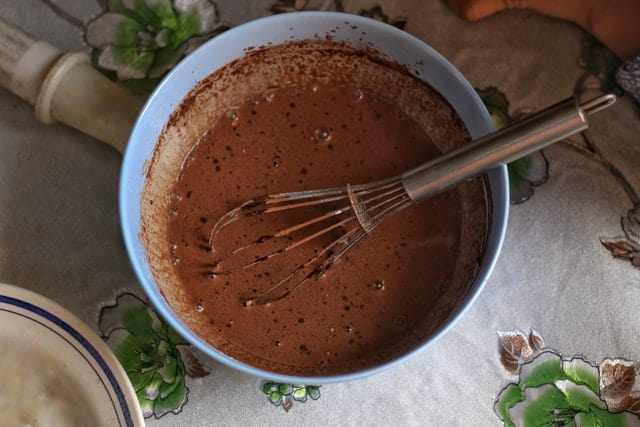
The Best Way to Make Melted Chocolate Thinner
Now that the common mistakes have been solved, it should be easier for you to melt your chocolates without running into major problems such as seizing. So what’s the best way to melt chocolate? Here’s it is.
First and foremost, you should focus on the technique. The best results don’t come out of the microwave. Although it’s doable and faster, the results are not the best you can get.
With the microwave out of the picture, it means you should melt your chocolate using a double boiler. It doesn’t matter if it’s standard or makeshift, as long as it’s a double boiler it should be fine.
Double boilers are easy to use. You just have to follow the simple steps below.
STEP 1 Make sure that the utensils and bowl are completely dry.
STEP 2 Fill the saucepan with one to two inches of water and place it on the stovetop.
STEP 3 Place the bowl on top of the saucepan and ensure that the bottom of the bowl does not touch the water below it.
STEP 4 Turn the heat on low and let the water simmer, but not reach a boil.
STEP 5 Place the chocolate chips or roughly chopped chocolate on the bowl and allow it to melt.
STEP 6 Wait for most of the chocolate to become shiny before you stir.
STEP 7 Stir the chocolate until it becomes smooth.
STEP 8 Remove the bowl from the heat.
The Next Best Way to Melt Chocolate
Let’s say you don’t have a double boiler and you are in a situation where you can’t make a makeshift one.
Then you can melt the chocolate in a microwave. Although it’s not going to give you the best results, it’s a quick and easy way to melt chocolates for your confections.
STEP 1 Make sure your microwavable dish and spoon are completely dry.
STEP 2 Chop your chocolate into pieces of equal size. Skip to the next step if using chocolate chips.
STEP 3 Set the microwave to 50% of its’ power regardless of what chocolate you are using.
STEP 4 Heat the chocolate for 1 ½ to 2 minutes, but stir it every 30 seconds.
It may not look melted because chocolate holds its’ shape well, but stirring it will show you how much of it has already melted. You need to get the bottom bits to the top to ensure they don’t burn.
Skipping the stirring may lead to your chocolate overheating.
How to Make Hardened Chocolate Thinner
Okay, so let’s say you’ve followed everything above to a tee yet the chocolate still seized at some point, don’t panic. There are some ways to fix it. Don’t throw your chocolate out yet and try any of the methods below.
Add thinning ingredients to your chocolate.
One of the best ways to make chocolate thinner is to introduce some fat into the mixture. How much fat you should add depends on how thin you want your chocolate to be. For this reason, add sparingly and add little by little until you get the preferred consistency.
Some of the best thinning ingredients you can use when thinning a small batch of chocolate are:
- Butter – regular butter or cocoa butter
- Oil – safflower oil, canola oil or coconut oil
- Shortening
NOTE: If using oil, it is best to add it to the chocolate before heating the mixture. If needed, you can add more to make it thinner according to your preference.
For a larger batch of chocolate, use Paramount Crystals.
If you need to thin a larger batch of hardened chocolate, use Paramount Crystals instead. They are made of vegetable oils and are widely used among professional bakers and confectioners.
Add in a little amount at a time and keep adding if necessary. To be safe, add a teaspoon of crystals for every cup of chocolate.
For creamy melted chocolate, add in a splash of warm milk.
Before adding the milk, remember the common mistake above – do not add a cold ingredient to the chocolate. So, you have to ensure that the milk is as warm as the chocolate before you pour it in.
Milk has high-fat content so it’s a better option than water. Plus, it makes the chocolate creamier so it’s a good ingredient to use if you are looking for a creamier texture.
While any milk works, using whole milk will yield the richest consistency. Consider that when choosing milk to use. If milk is not available, you can use cream instead.
Final Thought
With all of the do’s and don’ts above, you should be able to master melting chocolates in no time. And even if you accidentally make the chocolate seize, don’t throw it out.
There are a few ways to save the chocolate and they are easy to do, too! Just use any of the thinning ingredients above and you’ll be on your way to making delectable confections in your kitchen – and no one will ever know you messed it up in the first place. ?


